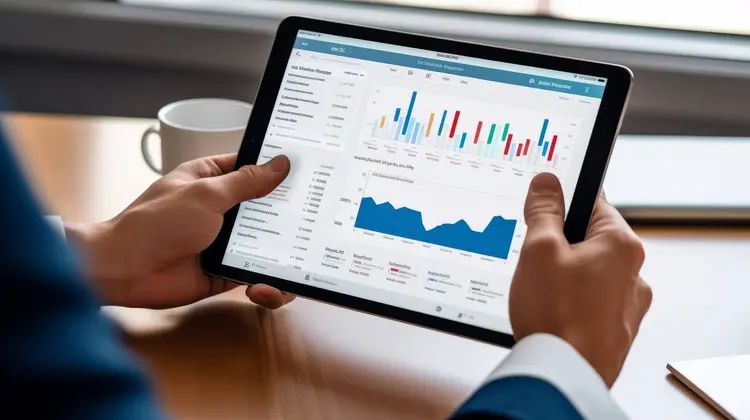Introduction
Tableau is a robust data visualization platform that allows users to develop dynamic and informative dashboards. One of the key features that enhance the usability of these dashboards is the ability to add filters. Filters allow users to customize their view of the data, making it easier to focus on specific information. In this guide, we’ll walk you through the process of adding filters to a Tableau dashboard, providing you with practical tips and best practices to ensure a smooth experience.
Understanding Filters in Tableau
Filters in Tableau are used to control what data is displayed in your visualizations. By adding filters, you can allow users to drill down into specific aspects of the data, compare different segments, and gain deeper insights. Filters can be applied to individual sheets, entire dashboards, or across multiple data sources.
Types of Filters in Tableau
- Dimension Filters: These are filters applied to categorical data, such as names, categories, or other qualitative data.
- Measure Filters: These filters apply to quantitative data, such as sales numbers, profit margins, etc.
- Date Filters: Specific to date fields, these filters allow users to select data from specific time periods.
- Context Filters: Used to create a context for other filters, providing a primary filter that can be further refined.
- Top N Filters: These filters display only the top or bottom N entries in a dataset based on a specific measure.
Step-by-Step Guide to Adding Filters in Tableau
1. Connecting Your Data Source
Before adding filters, ensure that your data source is connected to Tableau. You can do this by clicking on the “Connect” pane and selecting the appropriate data source. Tableau supports various data sources, including Excel, SQL databases, and more.
2. Creating a Worksheet
To start, create a worksheet by clicking on the “New Worksheet” icon. This is where you’ll build your visualizations. Drag and drop the necessary fields into the Rows and Columns shelves to create a chart or graph.
3. Adding a Filter
To add a filter, follow these steps:
- Drag and Drop Method: Simply drag the dimension or measure you want to filter onto the “Filters” shelf. Tableau will automatically prompt you with filter options.
- Using the Filter Menu: Right-click on the field you want to filter, then select “Filter.” A dialog box will appear, allowing you to customize the filter criteria.
4. Configuring the Filter
After adding the filter, you can configure its settings. This includes selecting specific values to display, setting range limits, or choosing relative dates. For example, if you’re working with sales data, you might filter by specific regions, product categories, or sales periods.
5. Adding Filters to the Dashboard
To add filters to a dashboard, follow these steps:
- Create a Dashboard: Click on the “New Dashboard” icon. This will open a blank canvas where you can drag and drop your worksheets.
- Drag Filters to the Dashboard: Once your worksheets are in place, you can drag the filters from the “Filters” shelf onto the dashboard. Tableau will automatically place the filter cards on the side of the dashboard.
- Customize Filter Appearance: You can adjust the appearance and layout of the filter cards. For instance, you can change the filter type (dropdown, slider, etc.), customize the title, or set default values.
6. Using Filter Actions
Filter actions in Tableau allow you to use one worksheet to filter another. This is particularly useful for creating interactive dashboards where selecting a data point in one chart updates another. To create a filter action:
- Go to the “Dashboard” menu and select “Actions.”
- Click “Add Action” and choose “Filter.”
- Specify the source and target sheets, as well as the field to filter on.
- Configure the filter behavior, such as whether it should show all values or only selected values.
7. Testing and Publishing the Dashboard
Before publishing your dashboard, thoroughly test the filters to ensure they work as expected. Check that they filter data correctly and that the interactions between different filters and sheets are smooth.
Once satisfied, you can publish the dashboard to Tableau Server, Tableau Online, or Tableau Public. This makes your dashboard accessible to others, who can then use the filters to explore the data.
Best Practices for Using Filters in Tableau
- Keep It Simple: Avoid overwhelming users with too many filters. Use only the most relevant filters to help users focus on key insights.
- Use Filter Hierarchies: When possible, structure filters in a hierarchical manner (e.g., Country > State > City) to make navigation intuitive.
- Context Filters for Performance: Use context filters to improve performance, especially when working with large datasets. They help narrow down the data, making subsequent filters faster.
- Consistent Filter Formatting: Ensure that all filter cards have a consistent look and feel, which enhances the dashboard’s aesthetic and usability.
- Consider User Experience: Think about how users will interact with the dashboard. Provide clear instructions or tooltips to guide them in using the filters effectively.
Conclusion
Adding filters to a Tableau dashboard is a powerful way to enhance the interactivity and usability of your visualizations. By following this step-by-step guide, you can create dynamic dashboards that allow users to explore data in meaningful ways. Remember to follow best practices to ensure a seamless and intuitive user experience. Happy data exploring!





























